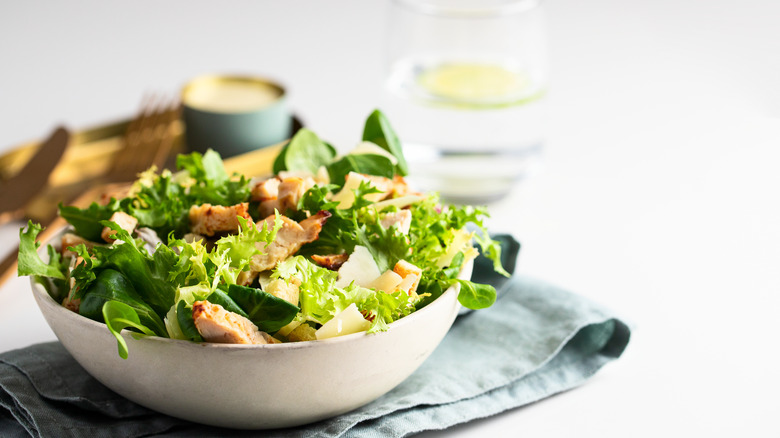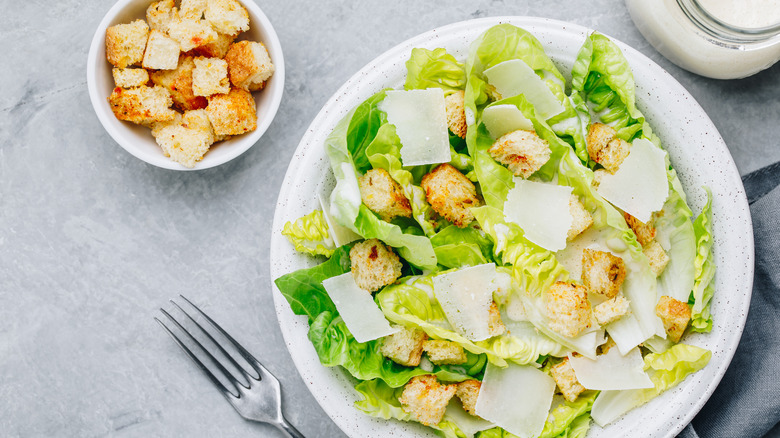How Caesar Salad Really Got Its Name
Would it be redundant to say that one of the most omnipresent salads in the history of salad is having a moment? If we may be so bold, that might be the case for the classic Caesar. The dish's comeback isn't signaled by its return to restaurant menus or prepared food sections at grocery stores because, to be honest, it never left. Rather, the Hour of the Caesar comes courtesy of viral recipes from celebrity chefs sharing an enthusiasm for offering fresh takes on classic dishes — as well as a passion for designer tinned fish, including anchovies, which play a starring role in the Caesar.
Take cookbook author and former Bon Appétit editor Molly Baz, who calls the Caesar the "Greatest Salad of All Time (GSOAT)" before introducing the insanely popular "Cae Sal" recipe in her debut cookbook, "Cook This Book" (via Food52). Baz even peddled a line of "Cae Sal" merchandise so fans could advertise their love of the tangy-crunchy salad in public — before they sold out on her website, that is. The dish is also a favorite of "Salt, Fat, Acid, Heat" author Samin Nosrat, whose Caesar recipe is "an exercise in the art of layering salty ingredients to build flavor," per The New York Times. But for all its fame and tenure, there's a lot you probably don't know about the origin of Caesar salad — including how it got its name.
No, it's not named after Julius Caesar
It would be so simple to say the origin of the Caesar salad involves a narrative in which a fictional version of the Roman emperor Julius Caesar — in this alternate timeline, a renowned lover of healthy lunches — discovered his affinity for crunchy romaine drizzled with zingy, garlicky dressing. Instead, the origins of Caesar salad are a bit more nebulous than that.
There's no definitive story of how the popular salad dish was invented, but almost all of them come back to a man named Caesar Cardini. According to Food & Wine, Cardini was a Northern Italian immigrant living in Tijuana, Mexico in the 1920s, who made his living as a chef cooking French-inspired fare. Since Prohibition was alive and well in the U.S., Cardini's Tijuana restaurant was a popular spot for Americans to come and let loose with a weekend of boozing it up in the open.
The Americans must have had big appetites, too, because they purportedly wiped out most of Cardini's food supply, according to the BBC. Cardini's daughter claims that the chef threw together "romaine lettuce leaves, raw egg yolk, Parmesan cheese, and other leftovers," which was all that was left in the kitchen. Customers went wild for the dish, so Cardini kept on making it.
However, this popular account isn't necessarily the definitive one. Other stories suggest that Cardini's brother was the true progenitor of the Caesar, while others say it was an employee at the restaurant. We don't have a firm answer, but we do know that the restaurant itself still stands.

